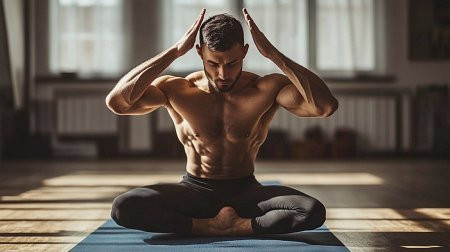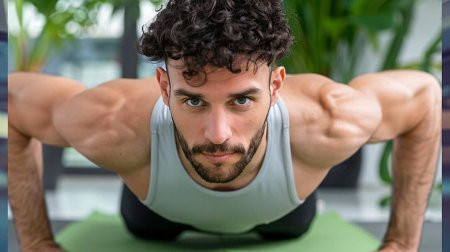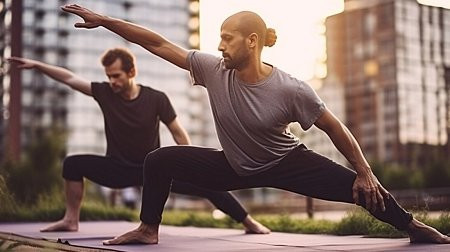Understanding Flexibility and Mobility
What is Flexibility?
Flexibility refers to the ability of muscles and tendons to stretch and move joints through their full range of motion. For an athlete, the greater the flexibility in their muscles and tendons, the more efficiently and effectively they can move. This is especially important for activities that require explosive power, quick changes of direction, or deep range-of-motion movements such as dancing, running, or lifting.
Maintaining flexibility can help to keep muscles from tightening up and becoming stiff, making it easier to perform everyday movements or complex sport-specific actions. Without proper flexibility, an athlete risks becoming vulnerable to strains and tears, particularly in muscles that are regularly worked during exercise.
What is Mobility?
While flexibility focuses on the muscles and tendons, mobility is about how freely a joint can move through its range of motion. Good mobility involves the combination of strength, flexibility, and joint integrity, allowing for smooth, controlled movement. For example, a soccer player needs adequate hip and ankle mobility to make quick turns and sprints, while a tennis player needs good shoulder mobility for an effective serve and powerful overhead shots.
The difference between flexibility and mobility is subtle but important. Flexibility can improve muscle length, while mobility enhances the functionality of the joint itself. Both are crucial for an athlete’s ability to move efficiently and avoid injuries.

How Flexibility and Mobility Affect Injury Prevention
Preventing Muscle Strains
One of the most common injuries athletes face is muscle strains, which occur when muscles are overstretched or torn. Muscle strains often happen during activities that require sudden bursts of movement, such as sprinting, jumping, or twisting. If muscles are too tight or lack proper flexibility, they are more likely to get overstretched, leading to strains.
Regular stretching helps lengthen muscles and improve their flexibility, making them more elastic and less prone to injury. Dynamic stretches, such as leg swings or arm circles, are particularly helpful before exercise as they prepare muscles for movement, warming them up and increasing blood flow. Static stretches after a workout can also help to lengthen and relax the muscles, reducing tightness and preventing future strains.
Avoiding Joint Problems
Joint mobility is equally as important as muscle flexibility when it comes to injury prevention. If joints are stiff or restricted, athletes may compensate by using other areas of the body to perform movements, leading to muscle imbalances and placing excess stress on vulnerable joints. This can result in joint injuries, such as sprains, dislocations, or even arthritis over time.
For example, limited ankle mobility in a basketball player can affect their ability to land properly after a jump, putting additional pressure on their knees and hips. By focusing on improving joint mobility, physiotherapists help athletes ensure that their joints are functioning optimally, reducing the risk of injury and improving movement patterns.
Enhanced Recovery and Reduced Fatigue
In addition to preventing injuries, good flexibility and mobility are vital for recovery. After a tough training session or game, tight muscles and stiff joints can lead to soreness and fatigue, which may increase the likelihood of overuse injuries. Mobility exercises, like gentle stretching or foam rolling, help muscles recover by promoting blood flow and releasing tension in the fascia—the connective tissue surrounding muscles.
When muscles are more flexible, they also recover more quickly, reducing the amount of downtime between training sessions. For athletes, this means being able to push themselves harder and more frequently, improving their overall fitness and performance.

Physiotherapy’s Role in Improving Flexibility and Mobility
Stretching Techniques
Stretching is one of the most effective ways to improve flexibility and mobility. It’s not just about reaching for your toes or holding a stretch for a few minutes; it’s about understanding the right types of stretches to do and when to do them.
Physiotherapists recommend two main types of stretching: dynamic and static. Dynamic stretches are typically performed before exercise to prepare muscles for movement. These stretches are active, meaning the athlete moves through a range of motion rather than holding a position. For example, arm circles, leg swings, and hip rotations are all great dynamic stretches that improve joint mobility and warm up muscles before activity.
Static stretches, on the other hand, are typically performed after exercise to help relax and lengthen muscles. These stretches involve holding a position for 15-30 seconds to target specific muscles and increase their flexibility. Hamstring stretches, quadriceps stretches, and calf stretches are common examples of static stretches that help to elongate muscles and reduce tension after physical activity.
Myofascial Release
Another technique that physiotherapists use to enhance flexibility and mobility is myofascial release. This involves applying gentle, sustained pressure to the connective tissue, known as fascia, to release tension and improve blood flow. Myofascial release can be done using tools like foam rollers, massage balls, or even with manual techniques by a physiotherapist.
Foam rolling, for example, is a popular self-myofascial release technique that athletes can incorporate into their post-training routine. It targets areas of tightness or muscle knots, helping to break down adhesions and reduce soreness. When muscles are less tight and the fascia is more pliable, the range of motion increases, leading to better overall flexibility and mobility.
Joint Mobilisation
For joint-related issues, physiotherapists may use joint mobilisations to restore movement in stiff or restricted joints. These techniques involve the application of gentle, controlled pressure to a joint to improve its range of motion. Joint mobilisations can be particularly effective for athletes who experience stiffness in areas like the shoulders, knees, or hips, where mobility is crucial for movement efficiency.
By improving joint mobility, physiotherapists help athletes move with more fluidity and reduce the risk of joint injuries caused by compensating for restricted movement. Joint mobilisation, in combination with stretching and strengthening exercises, ensures that athletes maintain optimal movement patterns both during training and in everyday life.
Specific Flexibility and Mobility Exercises for Athletes
Sport-Specific Stretches and Movements
When it comes to flexibility and mobility, one size doesn’t fit all. Athletes in different sports face unique challenges that require tailored exercises. A football player, for example, needs strong and flexible hip flexors to make quick, explosive movements on the field, while a swimmer needs shoulder flexibility to execute an efficient stroke.
For sport-specific flexibility and mobility, physiotherapists often design routines that target the muscles and joints most used in that sport. For instance, a runner may focus on stretches for the hamstrings, calves, and hip flexors, while a tennis player might prioritise shoulder mobility exercises to improve their serve. These exercises not only improve flexibility and mobility but also ensure that athletes are more prepared for the specific demands of their sport, reducing the risk of overuse injuries.
Common sport-specific movements may include:
- Hip flexor stretches for runners and cyclists to improve stride length and prevent tightness in the lower body.
- Shoulder mobility exercises for swimmers and tennis players to enhance overhead movement and arm speed.
- Ankle mobility stretches for basketball and football players to enhance jumping ability and prevent sprains.
By incorporating these sport-specific movements into their routines, athletes can significantly improve their performance while reducing the likelihood of injury.
Yoga and Pilates
Yoga and Pilates have long been recognised for their benefits in improving flexibility and mobility. Both disciplines focus on controlled movements, breathing, and stretching, making them ideal for athletes looking to enhance range of motion, muscle strength, and overall body awareness.
Yoga, with its wide variety of poses and stretches, helps to open up the body and improve both flexibility and joint mobility. The focus on mindful breathing and stretching helps athletes maintain proper posture and alignment, reducing tension in the body and preventing injuries caused by poor movement patterns.
Pilates, on the other hand, focuses on building core strength and improving overall body mechanics, which is essential for stabilising joints and maintaining fluid motion. By combining strength and flexibility, Pilates exercises improve the balance between flexibility and stability, which is crucial for preventing injuries in athletes who engage in high-impact activities.
Many professional athletes incorporate yoga and Pilates into their training routines to complement their sport-specific exercises. These practices not only help to enhance flexibility and mobility but also aid in relaxation, reduce stress, and improve mental focus.

Foam Rolling and Self-Myofascial Release Techniques
Foam rolling and other self-myofascial release (SMR) techniques are commonly used by athletes to maintain flexibility and mobility. These techniques are often incorporated into post-workout recovery routines to alleviate tightness, release muscle knots, and improve blood circulation to the muscles.
Foam rolling targets the fascia, the connective tissue surrounding muscles, to release any tension or adhesions that may have developed during intense physical activity. By gently applying pressure to specific areas, athletes can break down tightness and improve the mobility of both the muscles and the joints.
For example, a runner might use a foam roller to release tension in the calves, hamstrings, and IT band, which are common areas for tightness. The action of foam rolling increases flexibility by improving tissue pliability and aiding in the recovery of muscle fibers that might otherwise be prone to injury.
As with any self-care technique, it’s essential to use foam rolling and SMR under the guidance of a physiotherapist, especially for athletes dealing with more serious injuries or tightness. Physiotherapists can help determine the best areas to target and the appropriate amount of pressure to apply for optimal results.
The Role of Physiotherapists in Developing a Flexibility and Mobility Routine
Individualised Assessment
Every athlete’s body is different, which is why having a physiotherapist conduct an individualised assessment is so valuable. Physiotherapists assess an athlete’s current flexibility and mobility levels, taking into account their sport, any previous injuries, and their specific movement patterns.
We had the chance to speak with the team at Applied Motion, a physiotherapy clinic based in Perth, who specialise in sports and musculoskeletal physiotherapy. They emphasised that the first step in creating a tailored mobility and flexibility routine is to fully understand the athlete’s unique needs. This involves a thorough assessment of joint range of motion, muscle length, and postural alignment. By identifying tight areas or imbalances, physiotherapists can develop a custom plan that includes stretches, strengthening exercises, and mobility drills specifically designed to address the athlete’s requirements.
For example, a physiotherapist might assess the flexibility of a runner’s hamstrings or the mobility of a basketball player’s ankles to ensure they can move efficiently without risking injury. With this personalised approach, athletes are more likely to stay injury-free and improve their performance.
In some cases, physiotherapists also assess how an athlete moves during sport-specific activities. By observing their form, a physiotherapist can make recommendations to optimise mobility and reduce the risk of injury during high-intensity movements. Applied Motion highlighted how important this step is, as it helps athletes perform better and stay healthier in the long run.
Preventive Care and Injury Management
Physiotherapists play an integral role not only in injury prevention but also in injury management. For athletes recovering from an injury, physiotherapists use targeted exercises to improve flexibility and mobility, which helps restore normal function to the affected area. For example, after a sprained ankle, physiotherapists may employ mobility exercises and stretches to improve joint flexibility and strength, gradually helping the athlete return to their sport.
As the team at Applied Motion pointed out, physiotherapy goes beyond just recovery. It helps athletes address the underlying causes of their injuries, so they can prevent them from recurring. For instance, an athlete with tight hip flexors may be more prone to back pain, so physiotherapists work to address these imbalances as part of the recovery process.
In addition to managing injuries, physiotherapists play a critical role in developing long-term injury prevention strategies. They guide athletes through warm-up routines, post-workout stretching, and recovery techniques—essential components for reducing the risk of injuries down the road. Physiotherapists also educate athletes on proper movement patterns to avoid unnecessary stress on their muscles and joints.
A well-rounded approach, combining strengthening exercises, flexibility work, and joint mobility exercises, is crucial to ensuring athletes stay at the top of their game. Whether it's a pre-season check-up, injury recovery, or general maintenance, physiotherapists—like the team at Applied Motion—are there to support athletes every step of the way.
Maintaining good flexibility and mobility is crucial for athletes of all levels to prevent injuries, enhance performance, and ensure long-term success in their sport. Through stretching, mobility exercises, and physiotherapy treatments, athletes can improve their range of motion and muscle flexibility, reducing the risk of strains, joint problems, and fatigue. With the help of physiotherapists, athletes can develop personalised flexibility and mobility routines that are tailored to their sport and individual needs, ensuring that they stay injury-free and perform at their best.
By prioritising flexibility and mobility training as part of their overall fitness regimen, athletes not only safeguard their physical well-being but also unlock their full potential in their chosen sport.












